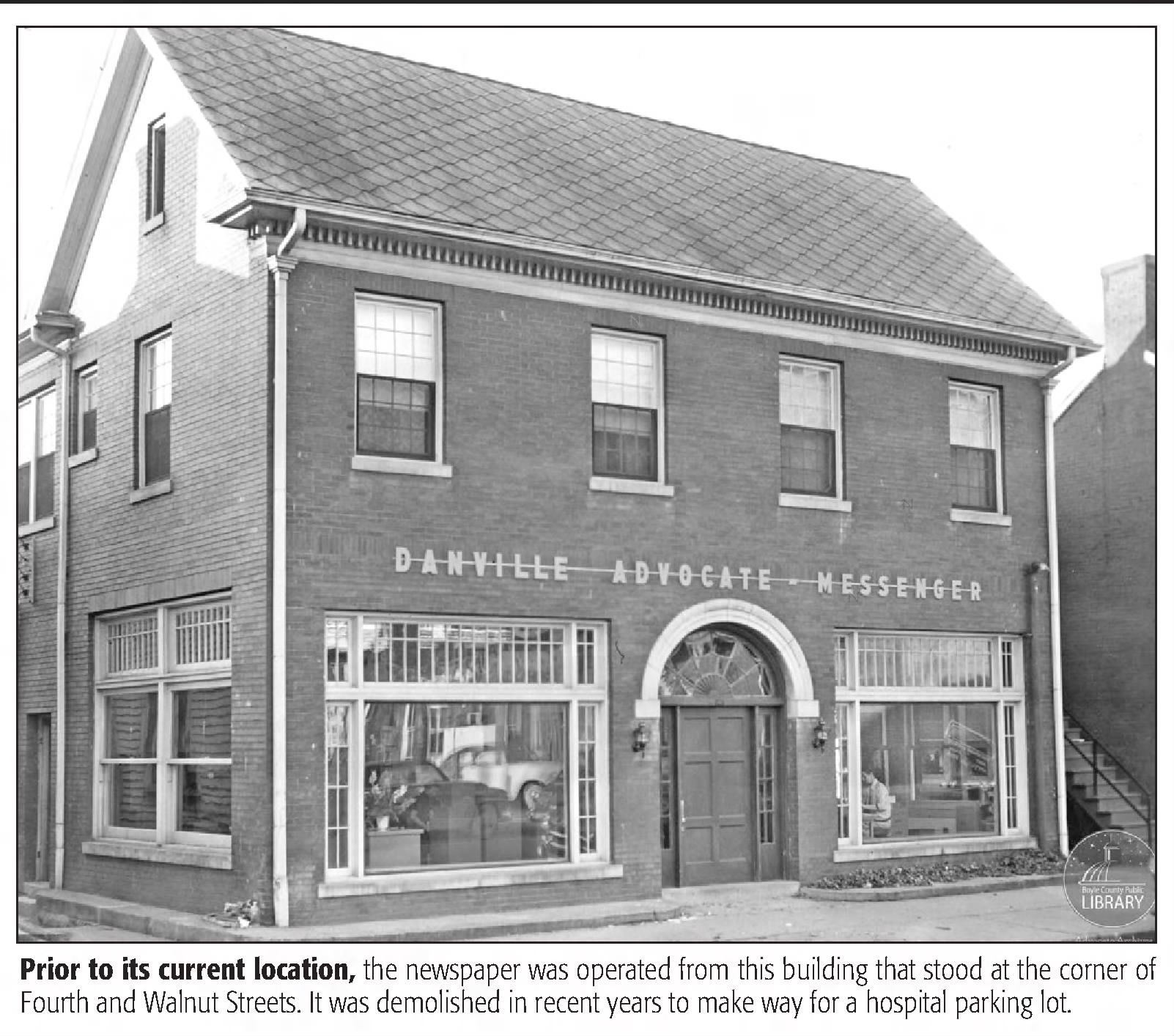Proposed education cuts in state budget create ‘significant concerns’
Published 2:26 am Tuesday, February 6, 2018
Increased pension costs are just the tip of the iceberg of potential funding changes facing school districts in 2018, and the proposed budget cuts outlined in House Bill 200 could push some districts too far, officials said.
“We have several significant concerns in this budget as it has been proposed,” said Eric Kennedy on Friday. Kennedy is director of governmental relations for the Kentucky School Boards Association.
“This budget proposes significant cuts to many public education programs across the board,” he said. “Many programs would be completely eliminated in this budget. Some of those touch on direct classroom instruction and student learning and student support.”
He said funding for textbooks and after-school programs are two of the proposed cuts.
Locally, officials with the Boyle County and Danville school districts say they are watching the budget conversation with some real concern, although both districts believe they will be able to weather the storm for at least a few years.
Boyle Superintendent Mike LaFavers said he couldn’t remember having seen cuts of this magnitude before. The Boyle district is facing $1.7 million in reduced funding. That’s a tough cut, LaFavers said.
“I’ve been doing this nine years, I’ve been in school administration for 15. I have never seen that level of cuts to public education,” LaFavers said. “If that actually goes through, it would probably be historic. When I go in our schools, in our classrooms, I’m really impressed with what’s happening there. I want us to continue to meet the needs of our kids going forward.”
Transportation
House Bill 200 proposes $138 million in cuts to transportation. That’s one of the big scares, Kennedy said.
Kennedy said the Kentucky Education Reform Act passed in 1990 put in place a requirement that “the state will fully reimburse transportation costs in every district, according to a statutorily set calculation formula.”
“For many years, it was fully funded. Since 2008, it has most often not been fully funded. It’s been about 58-60 percent state reimbursement. The budget would cut that to 25 percent of what the actual costs are statewide,” he said. “Districts will just have to pick up those costs.”
For the Boyle County School District, the increased transportation cost is expected to be $494,000.
“You’re going to see more districts struggling to buy buses,” LaFavers said.
Boyle County has 36 buses on the road and buys two each year, enabling them to rotate each bus off about every 18 years.
“If you stop buying two buses a year in the Boyle County Schools, you’re going to have buses on the road that are 19, 20, 21, 22 years old … It’s going to be harder to buy buses every year,” he said. “I’m sure some school districts — and I don’t know what’s going to happen in Boyle yet — are going to have to combine routes, so the drive time for kids will be longer.”
Danville Independent School District is anticipating a cut of about $135,000.
“That’s two-and-a-half teaching positions,” said Danville Independent Schools Superintendent Keith Look.
The fact that state statute says the funding is to be reimbursed seems to not matter, he said.
“If the money isn’t there, the money isn’t there. And if you aren’t willing to raise taxes or figure out some way to put the money in, then you get to renegotiate your promises,” Look said.
Danville Schools’ Finance Director Paul Dean said the district has taken steps in recent years to ensure it is being as efficient as possible, such as purchasing bus routing software.
“We’re trying to do some things to minimize the transportation costs, but when you’re taking a hit like that, it more than offsets what you can do to reduce costs,” Dean said.
Kennedy said there are about 20 districts who would be hit especially hard by the cuts, based on a presentation from Education Commissioner Stephen Pruitt.
“If districts were to have to pick that up, that alone, we think, would push several districts almost to the point of insolvency,” Kennedy said.
Other concerns
Health insurance costs are another big concern, Kennedy said.
“For many years, the state has paid the cost of the employer share of employee health insurance premiums. The state has paid that on behalf of all of the school districts,” he said, explaining that was because the school employees were considered state employees as it is a state system of schools.
“All of the district employees are part of the state employee health insurance plan. Districts don’t have the option to pull out of that plan or offer a different plan that might be less expensive.”
Kennedy said the proposal underfunds health insurance plans by about $130 million.
“It says, ‘Well, if this is not enough to cover this cost, local districts will have to pick up the excess,’” he said.
LaFavers said one of their concerns is timing — staffing plans need to be underway by the end of February, but the state budget process could have an impact on that.
“The tough part is we don’t have a full picture of what we’re walking into,” he said.
LaFavers is also concerned that the budget is going to be hit so many different places.
Currently, there are proposed cuts to textbooks, technology, professional development, family resource and youth service centers and the Department of Juvenile Justice, of which the Boyle County Schools receives funding for their alternative school.
Dean said the cuts to the family resource and youth service centers are going to hurt the kids who need it most. He said the after-school programs being cut will also hit the Danville district — it receives grants for math and reading programs for students.
Look said, “When you push greater responsibility financially on what districts can do through tax rates, you create the inequity that led to Kentucky’s education system being ruled unconstitutional in 1989.”
That happened in the case Rose v. Council for Better Education, which led to major reforms, according to The Courier Journal.
“The Supreme Court ruled that the state legislature must adequately fund an efficient system of common schools throughout the commonwealth,” according to The Courier Journal.
“The greater responsibility at the local level, the greater disparity you have between districts,” Look said. “When you have a disparity between districts, you then have the ‘haves’ and the ‘have-nots’ and recreate what Kentucky has spent the last 30 years addressing.”
Making up the dollars
LaFavers said Boyle’s district is financially strong right now.
“We worked hard to get there; it didn’t just happen on its own. It’s been years of discipline, budgeting,” he said. “It will allow us to weather the first year of this storm, but these cuts — many of them — are going to be ongoing. Each year that you cut this deep to public education, it’s going to be harder for the educators to have the same impact.
“Long-term, no question it’s going to get to our services and the quality that our children experience. There’s no way around that.”
Dean said another concern is that the district is “at the mercy of the federal government,” too. If the the federal government also decides to implement more cuts to education, it will compound the problem.
“They have, this year, gone back and reduced some of our title monies,” he said. “If you can’t raise money to offset that, then you’re faced with cuts.”
Kennedy said may districts are being pushed to the breaking point.
“Really, in effect, that’s pushing it to local taxpayers. When we said ‘breaking point,’ a local school board, of course has taxing authority … They are very restricted in the types of taxes they can raise and the tax rates from year to year,” he said. “Even if they increase their local taxes almost to the limit that they can, we think it probably would not bring in enough to cover these cost shifts.”
Kennedy said the current bill is just a proposal; it can and likely will change by the time it becomes law.
Kennedy said it is expected that tax reform will have an impact on this budget.
“The state does not have the level of resources financially that it needs to fully fund the programs, even in vital, essential programs,” he said.
Kennedy said his agency’s issue with the cuts being proposed to education is that the Kentucky Constitution places the responsibility of funding education on the state legislature.
“The primary responsibility for adequately funding and providing education in the public schools is with the state legislature. It is a state system of schools that is meant to be substantially equitable across the state,” Kennedy said. “Any time more and more of the financial burden shifts to the local level, that will always increase the inequalities that we see in the levels of funding from a more poor community to a more affluent community.”






